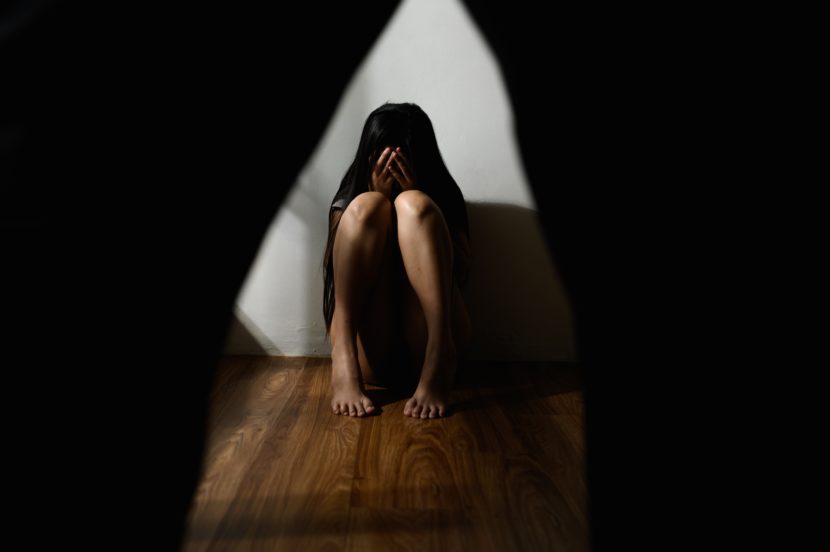Between 1997 and 2013, around 1,400 children were sexually exploited in Rotherham, UK, by grooming gangs. Similar gangs were also found to be operating in other towns and cities across England, including Oldham, Rochdale, and Derby. In response, the UK government has committed to implementing all 12 recommendations proposed by Baroness Casey — known collectively as the Casey Report — aimed at strengthening child protection and preventing further abuse.
The “ grooming gangs” scandal
The UK is not new to cases of child sexual exploitation. In 2011, The Times of London published a series of investigative articles on the sexual exploitation of girls by criminal gangs in England’s north and Midlands from 1997 onward. The cases came to be known as the “grooming gangs” scandal. In 2014, the findings of a years-long official investigation into such abuse in the northern English town of Rotherham set off a national reckoning (Specia, 2025).
At least 1,400 children, some as young as 11, were found to have been groomed for sexual exploitation between 1997 and 2013, while the local authorities looked the other way for years. Similar gangs were also found to be operating in other towns and cities in England, including Oldham, Rochdale and Derby.
The grooming in Rotherham, population 257,000, tended to follow a similar pattern: the courting of the girls by young men in public places like town centres and shopping malls; the gradual introduction of alcohol and other drugs; then a sexual relationship with one man, who demanded that the girl prove her love by having sex with his friends (Specia, 2025).
The case was highly combustible because of the racial contrast between the victims, who in the Rotherham case were mostly white, and the perpetrators. Prosecutions in Oxford and the northern towns of Oldham and Rochdale in 2012 for the abuse of dozens of girls included men of Pakistani, Bangladeshi and Afghan heritage who received long prison terms (Specia, 2025).
Children were seen as “child prostitutes” rather than victims
Regarding the case of Rotherham, the local government report found that the police and social services mostly let down victims and parents who asked for help. Some police officers were found to have referred to victims as “tarts” and to the girls’ abuse as a “lifestyle choice” (Specia, 2025). The police described them as “undesirables” while knowing they were indeed “desired” by both Pakistani and white men for sex.
They were never seen as children at all, but they were viewed through a deeply disturbing lens, as though an 11-year-old could “consent” to sex with multiple adults. Heroin use, self-harm, attempted suicide, and unwanted pregnancies were reported to the authorities. Meanwhile, “care” was being outsourced (Moore, 2014).
The perception and public attitudes towards children involved in this phenomenon have shifted over the years. Children who used to be called “child prostitutes” are now understood to be victims of child sexual exploitation. However, there continues to be an awkwardness in society with acknowledging and discussing child sexual abuse, and there remains a tendency to apportion blame to adolescent children for their own abuse.
The scale of child sexual exploitation in the UK today
According to the few data collected, around 500,000 children a year are likely to experience child sexual abuse (of any kind). However, for the vast majority, their abuse is not identified, and it is not reported to the police either at the time or later. In 2024, police recorded crime data shows just over 100,000 offences of child sexual abuse and exploitation (Baroness Casey of Blackstock, 2025). The Complex and Organised Child Abuse 7 Dataset (COCAD) has identified around 700 recorded offences of group-based child sexual exploitation in 2023.
National police data confirms that the majority of victims of child sexual exploitation are girls (78 percent in 2023) with the most common age for victims being between 10 and 15 years old (57 percent in 2023). Most perpetrators are men (76 percent in 2023). The data suggests that the age profile of perpetrators varies, with 39 percent of suspects aged 10 to 15 and 18 percent aged 18 to 29. This younger age profile is likely to be a result of an increase in reporting of online and child-on-child offending (Baroness Casey of Blackstock, 2025).
However, there is no recent study of the prevalence of child sexual abuse and exploitation in the UK population, as well as the definitions used by the police, local authorities, health, and the criminal justice system are confusing and inconsistently applied. As a result, it is difficult to assess the magnitude of the phenomenon, and it is highly unlikely that this accurately reflects the true scale of child sexual exploitation or group-based exploitation (Baroness Casey of Blackstock, 2025).
The nature of group-based child sexual exploitation
The grooming gangs model remains similar to those that happened in Rotherham between 1997 and 2013 (Kumar, 2025). The practice usually implies a man targeting a vulnerable adolescent child, often those in care, or children with learning or physical disabilities, grooming them into thinking they are their “boyfriend”, showering them with love and gifts and taking them out. Subsequently, they pass them to other men for sex, using drugs and alcohol to make children compliant, often turning to violence and coercion to control them.
This model has not changed significantly over time, although hotspots might have moved from parks to vape shops and the use of hotels with anonymous check-in facilities (Baroness Casey of Blackstock, 2025). Grooming gangs are often loosely interconnected, based around existing social connections, and so are often broadly homogenous in age, ethnic background and socioeconomic status. Acting in a group likely has a disinhibiting effect on the perpetrators, while misogyny or “othering” allows them to disregard victims.
Other patterns of sexual exploitation include sexual exploitation of girls within street gangs, where the motive is sexual gratification of gang members, but also to lure girls into working for them. Child sexual exploitation has also emerged as a key feature in children who are victims of modern slavery (a term that includes any form of human trafficking, slavery, servitude or forced labour).

The nature of child sexual abuse in general has been changed by the growth of online sexual abuse offending, which now accounts for 40 percent of all sexual abuse crime. This has altered the age profile of offenders and, to an extent, the gender profile too, making it harder to see the profile of both perpetrators and victims of group-based child sexual exploitation (Baroness Casey of Blackstock, 2025).
The context of the Casey Report
The Casey Report was commissioned by the UK Prime Minister, Keir Starmer, in January 2025, after the Labour government came under extreme pressure to hold an inquiry into the “grooming gangs scandal” (Kenyon, 2025). At the start of the year, the government dismissed calls for a national inquiry, arguing it had already been examined in a seven-year inquiry led by Professor Alexis Jay, which was concluded in 2022 (Morton, 2025).
Instead, the UK’s Home Secretary, Yvette Cooper, announced a “rapid” three-month audit, led by Baroness Casey, into the data and evidence on the nature and scale of group-based child sexual abuse (Mason et Allen, 2025). The report focuses on group-based child sexual exploitation (CSE) by “grooming gangs”, which involves multiple perpetrators coercing, manipulating, and deceiving children into sex, to create an illusion of consent (Baroness Casey of Blackstock, 2025).
The Casey Report is a “wake-up call” for the UK government
The Casey Report outlines twelve key recommendations to tackle group-based child sexual exploitation, with a central message: children must be seen and treated as children, and their safety must come first. A major legal reform proposed is to ensure that any adult who intentionally penetrates a child under 16 is automatically charged with rape, reducing legal ambiguity and aligning with protections in countries like France.
A cultural shift is also needed, moving away from victim-blaming and towards a more protective approach. To do so, data are needed: collecting ethnicity and nationality data for all suspects should be mandatory, alongside better tracking of victims. Agencies must share safeguarding information without delay, with oversight from inspectorates and the proposed Child Protection Authority.
Practical measures, such as stricter taxi licensing and stopping “out-of-area” vehicles, are effective in disrupting enabling factors, but it is also important that these recommendations are properly resourced, implemented over several years, and tracked across departments, with regular reporting to Parliament to ensure sustained action (Baroness Casey of Blackstock, 2025).
The UK’s Home Secretary, Yvette Cooper, confirmed the government would accept all twelve recommendations in the Casey Report (Adler, 2025). The Prime Minister has announced there will be a full national statutory inquiry into grooming gangs which will cover England and Wales (Mason et Allen, 2025). The police will launch a new national criminal operation targeting grooming gangs, overseen by the National Crime Agency (NCA).
This operation would be overseen by an independent commission with powers to compel witnesses to provide evidence. Finally, the government has said it will make it a formal requirement to collect both ethnicity and nationality data for all cases of child sexual abuse and exploitation, as well as commission new research into the cultural and social drivers of the issue (Morton, 2025).
Will the Casey Report bring a positive change to child protection?
William Tantam, a senior lecturer in anthropology at the University of Bristol, who has worked on a previous independent inquiry into child sexual abuse, stated that the main positive element is related to the fact that there would be more consistency and clarity in data. Another positive aspect is related to the fact that the inquiry panel will have the authority to compel agencies to participate (Adler, 2025).
The support of the NCA to investigate cases is also a very positive outcome. According to Richard Scorer, the head of Abuse Law and Public Inquiries at Slater and Gordon, a law firm in the UK, different police forces have not always succeeded in coordinating their efforts to tackle grooming gangs, so a more centralised overview from the NCA might secure better coordination of police activity. However, Richard Scorer warned that the government would need to assign an additional budget for the implementation of the changes recommended by Baroness Casey (Adler, 2025).
New measures to tackle grooming gangs
The UK government’s commitment to implement the recommendations is certainly a positive step toward strengthening child protection against child sexual exploitation. In March 2024, it established a dedicated Grooming Gangs Taskforce. Since its launch, the Taskforce has contributed to hundreds of arrests across the country — including 597 in just the last nine months of 2024.
In addition, in April 2025, the Minister for Safeguarding and Violence Against Women and Girls, Jess Phillips, announced that a new police performance framework on child sexual abuse is under development. It will include new standards on public protection, child abuse, and exploitation. The Ministry is also working on legislation to tackle online grooming, including abuse facilitated by artificial intelligence, and to prevent registered sex offenders from changing their names to avoid detection.

These developments, while promising, must be matched by long-term investment, transparency, and sustained public pressure. At Humanium, we believe that raising awareness of these systemic issues is critical to ending child sexual exploitation — not just in the UK, but globally. If you would like to support this effort and help build a safer future for children around the world, you can do so by making a donation, engaging in sponsorship, or becoming a volunteer.
Written by Arianna Braga
References:
Adler, N. (2025). What is the Casey report on UK ‘grooming gangs’, and why did Labour U-turn? Retrieved from Aljazeera at https://www.aljazeera.com/news/2025/6/17/what-is-the-casey-report-on-uk-grooming-gangs-and-why-did-labour-u-turn, accessed on 26 June 2025.
Baroness Casey of Blackstock (2025). National Audit on Group-Based Child Sexual Exploitation and Abuse. Retrieved from the Government of the UK at https://assets.publishing.service.gov.uk/media/685559d05225e4ed0bf3ce54/National_Audit_on_Group-based_Child_Sexual_Exploitation_and_Abuse.pdf, accessed on 26 June 2025.
Holt, A. (2025). Casey report pulls no punches – but will it lead to meaningful change? Retrieved from BBC at https://www.bbc.com/news/articles/c5y0lrk2dqyo, accessed on 26 June 2025.
Kenyon, M. (2025). The Casey report reveals 15 years of establishment denial. Retrieved from The New Statesman at https://www.newstatesman.com/politics/uk-politics/2025/06/the-casey-report-reveals-fifteen-years-of-establishment-denial, accessed on 5 July 2025.
Kumar, A. (2025). What was the Rotherham scandal, and why is Musk demanding accountability? Retrieved from Business Standard at https://www.business-standard.com/world-news/rotherham-scandal-elon-musk-demands-accountability-125010200516_1.html, accessed on 5 July 2025.
Lawless, J. (2025). UK to hold national inquiry into organized child sexual abuse after pressure from Musk. Retrieved from AP News at https://apnews.com/article/grooming-gangs-elon-musk-721e0e29fb390b41a03b3cd6e8cadb5f, accessed on 5 July 2025.
Mason, C., Allen, I. (2025). PM announces national inquiry into grooming gangs. Retrieved from BBC at https://www.bbc.com/news/articles/c7872pngj2qo, accessed on 5 July 2025.
Moore, S. (2014). Poor children are seen as worthless, as Rotherham’s abuse scandal shows. Retrieved from The Guardian at https://www.theguardian.com/commentisfree/2014/aug/27/poor-children-seen-as-worthless-rotherham-abuse-scandal, accessed on 10 July 2025.
Phillips, J. (2025). Speech – Tackling child sexual abuse and exploitation: update. Retrieved from the Government of the UK at https://www.gov.uk/government/speeches/tackling-child-sexual-abuse-and-exploitation-update, accessed on 10 July 2025.
Specia, M. (2025). What Is the U.K. ‘Grooming Gang’ Scandal Seized On by Elon Musk? Retrieved from The New York Times at https://www.nytimes.com/2025/01/07/world/europe/uk-grooming-gangs-elon-musk.html, accessed on 10 July 2025.


